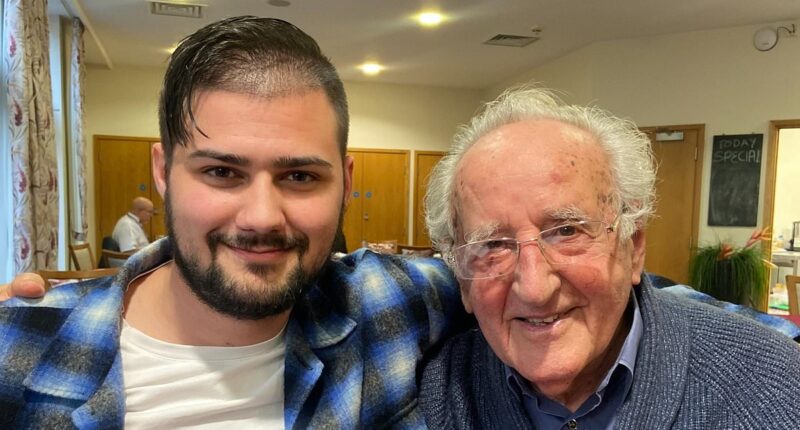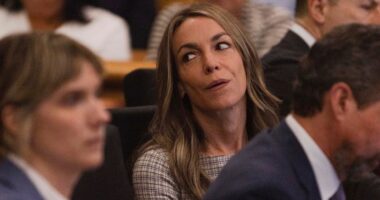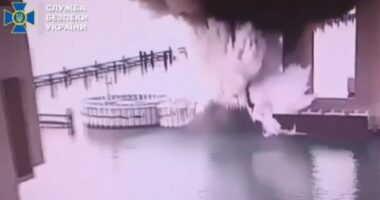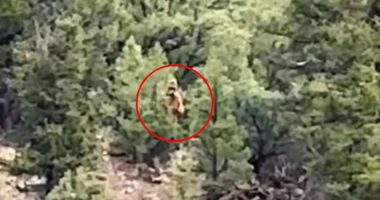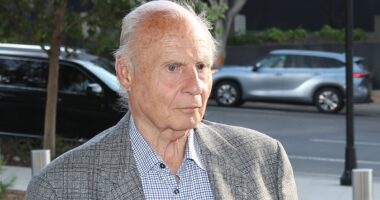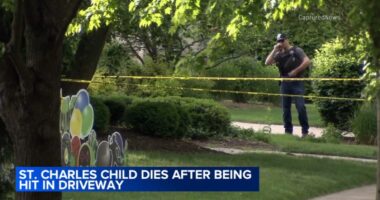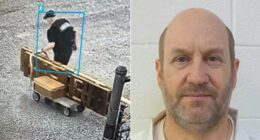
There is a familiar quality to the hand-drawn characters in an animated film depicting a child survivor of the Holocaust, and it is for a noteworthy reason.
The artist dedicated close to a year meticulously reviewing numerous photographs from the Second World War to accurately portray the actual faces of individuals who faced unspeakable atrocities under the Nazi regime.
Animator Zoom Rockman also ensured that every aspect, including locations, events, and dialogues, in the project was inspired by the real-life ordeals of Ivor Perl, who was only 12 years old when he was sent to Auschwitz in 1944.
It was there the youngster, born Yitzchak Perlmutter from Mako, Hungary, would be known as number 112021 for his duration at ‘literally hell on earth’ until Allied troops arrived a year later.
He cheated death many times, including narrowly escaping the clutches of Dr Josef Mengele – notorious for his chilling human experiments – as well as evading selection for the gas chambers, contracting deadly typhus and surviving a 500-mile death march to Kaufering and Dachau.
Perl, who lives in a retirement home in north London and turns 93 next month, will no doubt feel the enormity of this year’s Holocaust Memorial Day, which marks 80 years since the liberation of Auschwitz-Birkenau.
It was here at this Nazi death camp in Poland that 1.1million people perished, including one million Jews from across central and eastern Europe. Overall, six million Jews were murdered at the hands of the Nazis.
Tragically, among them were Perl’s parents and seven of his siblings. Only he and his brother, Alec, were still alive by the end of the war, when they were granted asylum by the British government to build new lives for themselves.
At the age of 18, Perl met his future wife, Rhoda. After he set up his own business manufacturing clothes in 1953, the couple finally married and had four children.
For decades, the now great-grandfather of six seldom spoke about the traumatic events he witnessed as a child survivor of the Holocaust, but years later he finally revealed what he had seen.
In 2023, he published his memoir, Chicken Soup Under The Tree, which inspired Rockman to turn Perl’s personal story of survival into a feature-length animation.
Survivor is now set to be screened at the JW3 community centre in London on Tuesday, as well as on ABC TV in Australia.
The film’s beautifully haunting soundtrack has been composed by Erran Baron Cohen, the older brother of actor Sacha Baron Cohen, while Rockman’s author mother Kate Lennard penned the screenplay.
Rockman, 24, has long been earning a name for himself as an artist and cartoonist. At the age of 12 he became the youngest artist in Beano’s history after his comic strip, Skanky Pigeon, was commissioned by the magazine.
He went on to become a satirical cartoonist with Private Eye for six years, until 2023.
Now in his latest venture, Rockman has used his own unique style of live action animation using hand-drawn puppets moved by clever mechanisms to bring Perl’s heartrending story to life.
It was important to both artist and subject that this new way of presenting the Holocaust would be ‘engaging’ for Gen Z and younger – a goal that has become all the more imperative as numbers of first-hand witnesses dwindle.
Equally important was that everything depicted in the film is true – from the faces of the puppets to the historical events that took place.
Speaking to MailOnline, Rockman was adamant the film would be a work of Holocaust fact, not fiction.
He explained: ‘At school, we were always told that we were the last generation who were going to meet Holocaust survivors.
‘I was equally aware of the attitudes, the Holocaust denial that is out there, especially on the internet. It feels like the trend is towards more denialism and misrepresentation as we go on.
‘At the same time we have a growing amount of Holocaust fiction, where the characters and events have been imagined – but if you do the research, it’s all there, the absolute horror of it. I didn’t see a need to make anything up.’
Rockman used Perl’s memoir as his core reference, supplementing it with the well-known testimonies of Elie Wiesel and Primo Levi to ensure he depicted conditions at Auschwitz as authentically as possible.
He also visited the notorious Nazi death camp and Munich in Germany, where Perl was moved for a short while after liberation.
And when it came to drawing his puppets, not one had a face penned from his own imagination.
‘Everyone in the film is based on the actual photo reference of a real person,’ he said, adding that some of the faces were drawn from images taken by famed war photographer Lee Miller after liberation.
He has even included a special nod to his own great uncle, Lazar Rozenwajn, who was also deported to Auschwitz.
A puppet with the face of Lazar appears in a scene with the young Perl who innocently asks why there is so much smoke coming out of a tall chimney at the edge of the death camp.
‘It’s a bakery’, Lazar says to protect him from revealing the horrifying truth about the camp’s crematorium.
Rockman has also incorporated the face of Holocaust artist David Olere, whose explicit drawings and paintings detail life as a Jewish Sonderkommando – prisoners who were forced to carry and dispose of bodies from the gas chambers.
He drew inspiration from Olere’s works, as well as the detailed camp depictions found in Sketchbook From Auschwitz, a collection of 22 drawings composed by an anonymous prisoner which were found hidden under one of the barracks.
As for the overall look of the film, Rockman chose black and white ink drawings with hints of blue in each scene.
Rockman thought of blue to denote the stains on the plastered walls left by Zyklon B as it reacted within the gas chambers – but also for another significant reason.
‘There’s a part in Ivor’s testimony in which he said not to believe all the nonsense about the birds never singing in Auschwitz, for when he arrived it was a warm, sunny day, the sky was blue, birds were singing, and butterflies were fluttering.
‘He wanted to say that the Holocaust did not happen In dark corners hidden away – the Holocaust happened in broad daylight, right while the world was watching.’
After finishing his labour of love – one that Rockman admits meant he barely slept for the duration of a year while researching, drawing and filming – the artist proudly showed the final version to Perl.
He sat and watched the film, before scrawling a few but poignantly-laden words on a private note which he passed to Rockman.
It simply said: ‘Dear Zoom, now I know why I survived,’ the artist revealed.
From Perl’s perspective, he has high hopes the film will educate more people about the brutality of the Holocaust long after the last survivors have passed away.
‘I hope I’m right that his film will be a tremendous help to humanity,’ Perl told MailOnline. ‘Not only to me, or Jews, but to humanity in general.
‘Hopefully what Zoom has done will help future generations to realise that things that happen to Jews or any other group of people might start there, but it doesn’t finish there.’
